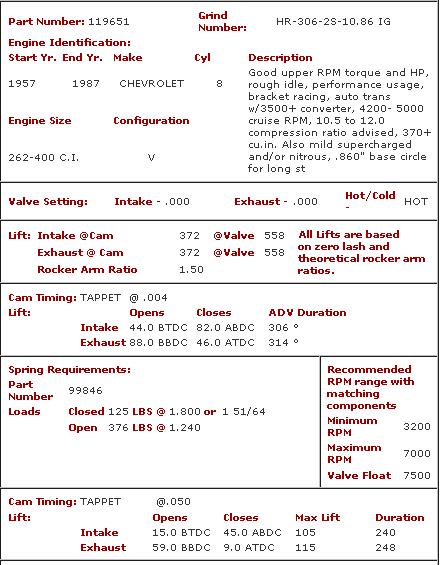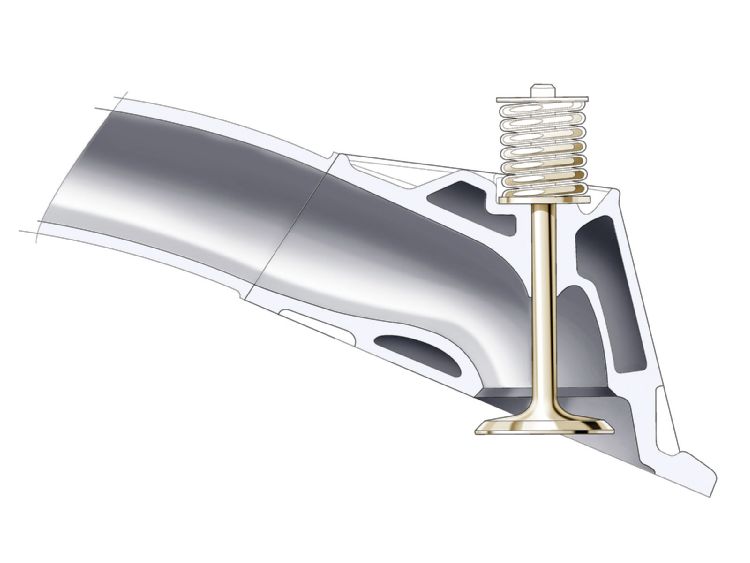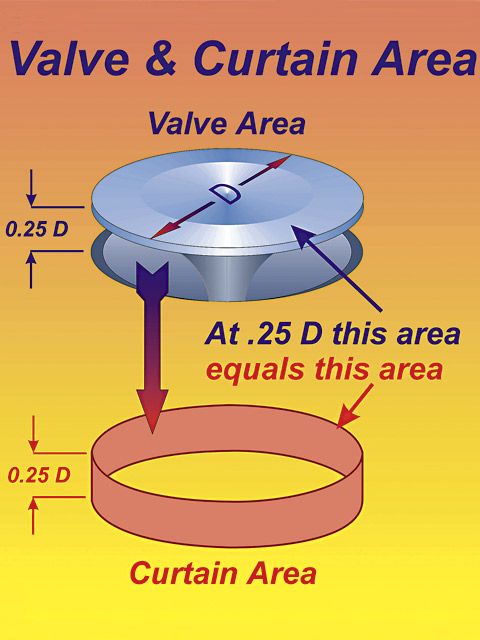brian, your calcs are WRONG!,
if isky suggested a cam with LESS duration that will produce MORE compression
will work ,how can a similar cam with marginally longer duration produce higher compression in the same engine? (it won,t it will result in marginally lower effective dynamic compression)
Ive used that cam in similar engines with zero issues,
if a slightly milder cam in ricks T-bucket in a similar engine,works rather well,
and the crane cam has a slightly longer valve timing holding the valves open slightly longer,
that effectively results in even lower dynamic compression, will tend to reduce marginally the effective compression, but remember were talking only a couple degrees different, probably less than .2 in compression, (8.2 vs 8.1)
that issky cam has a .050 intake valve close at 42 abdc
that crower cam has a .050 intake valve close at 44 abdc
that crane cam has a .050 intake valve close at 45 abdc
look heres several cam manufacturers numbers why not call each, and average the suggested cams duration and lca
read this thread
http://garage.grumpysperformance.com/index.php?threads/semi-fool-proof-cam-sellection.82/
crane (386)310-4875
crower 619.661.6477
https://www.crower.com/camshafts.html?cat=854
erson 800-641-7920
http://www.pbm-erson.com/UserFiles/Documents/Catalogs/2013 erson catalog.pdf
lunati..662-892-1500
http://www.lunatipower.com/Performance-Cams.aspx
ISKY 323.770.0930
clay smith 714-523-0530
herbert cams 714-491 -2267
if isky suggested a cam with LESS duration that will produce MORE compression
will work ,how can a similar cam with marginally longer duration produce higher compression in the same engine? (it won,t it will result in marginally lower effective dynamic compression)
Ive used that cam in similar engines with zero issues,
if a slightly milder cam in ricks T-bucket in a similar engine,works rather well,
and the crane cam has a slightly longer valve timing holding the valves open slightly longer,
that effectively results in even lower dynamic compression, will tend to reduce marginally the effective compression, but remember were talking only a couple degrees different, probably less than .2 in compression, (8.2 vs 8.1)
that issky cam has a .050 intake valve close at 42 abdc
that crower cam has a .050 intake valve close at 44 abdc
that crane cam has a .050 intake valve close at 45 abdc
look heres several cam manufacturers numbers why not call each, and average the suggested cams duration and lca
read this thread
http://garage.grumpysperformance.com/index.php?threads/semi-fool-proof-cam-sellection.82/
crane (386)310-4875
crower 619.661.6477
https://www.crower.com/camshafts.html?cat=854
erson 800-641-7920
http://www.pbm-erson.com/UserFiles/Documents/Catalogs/2013 erson catalog.pdf
lunati..662-892-1500
http://www.lunatipower.com/Performance-Cams.aspx
ISKY 323.770.0930
clay smith 714-523-0530
herbert cams 714-491 -2267
Last edited:








